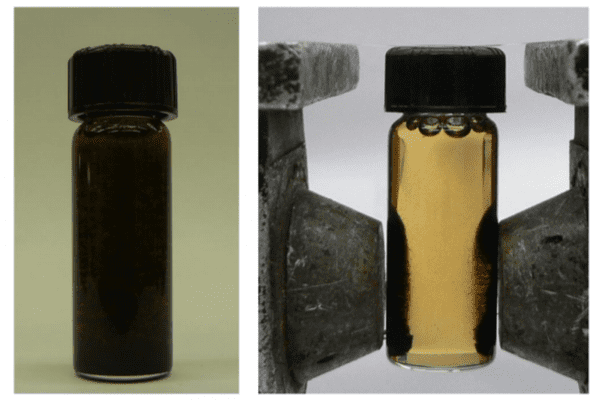Kevin Major

Kevin Major

Exploring the Photophysics and Photocatalytic Properties of Platinum and Palladium Nanoparticles
Abstract:
Platinum and Palladium nanoparticles are important nanoscale materials for a variety of materials science and industrial applications. The presented research covers a broad spectrum of these unique nanoparticles, from their synthesis and characterization to their use in systems that examine their photophysical properties and as catalysts and photocatalysts.
We developed a new synthetic method for producing well-defined platinum and palladium nanoparticles of less than 5 nm diameter. The nanoparticles are stabilized by long chain thioethers, which allow them to retain their stability in a variety of solvent environments. Stability and size control are critical to the application of these particles to experimental research in a variety of systems.
After demonstrating the catalytic activity of these nanoparticles, we developed a method for linking them to magnetic cobalt ferrite nanoparticles. These linked particles were found to be highly recoverable when placed in a magnetic field, allowing for their reuse. In addition to traditional catalytic systems, platinum and palladium nanoparticles hold great potential as photocatalysts. We chose to study their use in two such systems.
The first system explored involved utilizing platinum nanoparticles as charge transfer catalysts from titanium dioxide nanoparticles. We demonstrated the ability of this system for the degradation of an organic dye as well as for hydrogen production via water splitting, both under dark conditions.
The final system explored involved studying the interaction between cadmium selenide quantum dots and palladium nanoparticles in solution. As a prelude to this research, we conducted an extensive study on the effects of stabilizing ligands on quantum dot fluorescence dynamics. We developed a model to define the dynamics of the dots based on changes in native ligand coverage upon sample dilution.
These studies allowed us to take these effects into account before studying the interaction of the dots with palladium nanoparticles. Palladium nanoparticles were found to exhibit two distinct effects on quantum dot fluorescence in solution. At higher palladium concentrations, we observed a quenching of the quantum dot fluorescence and shortening of the lifetime, which was attributed to Förster energy transfer from the quantum dots to the nanoparticles. Low palladium concentrations exhibited opposite effects, which were attributed to enhanced absorption, similar to previously studied quantum dot — gold nanoparticle systems.
By fully studying these nanoparticles, from their synthesis and characterization to their use in various systems, we in turn developed a thorough understanding of their unique photophysical properties.
Sponsoring Chair: Dr. Marcus Jones
Committee: Dr. Patrick Moyer, Dr. Edward Stokes, Dr. Ana Jofre, Dr. Amy Ringwood